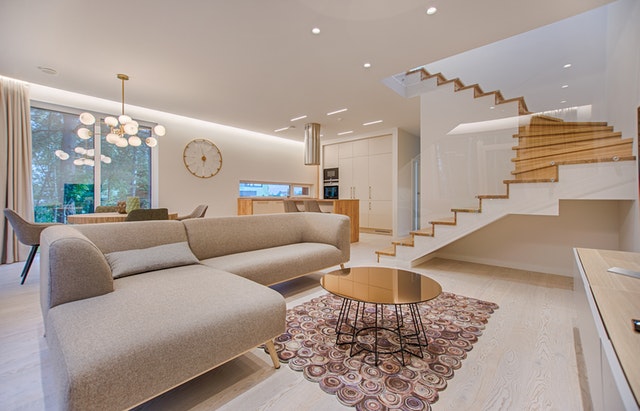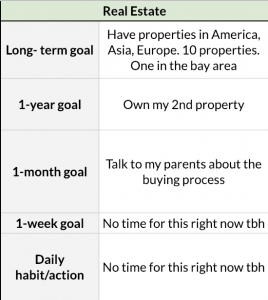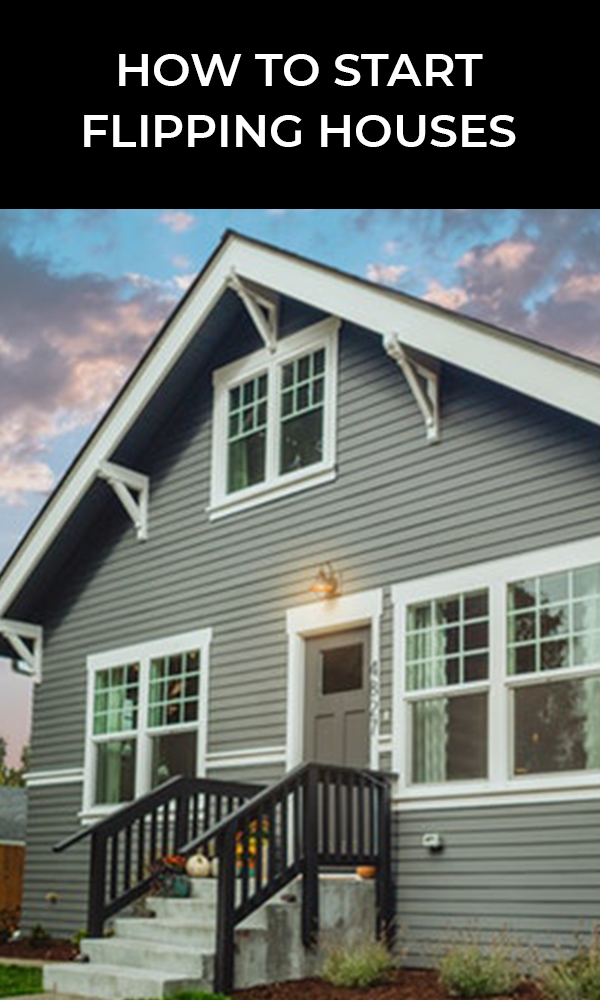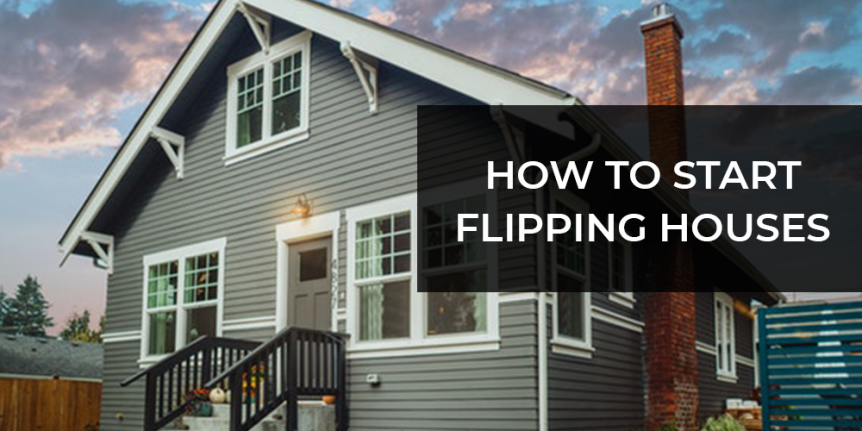When it comes to flipping homes, I’m a total newbie. I just needed to throw that out there before you read this post!
I’ve always been interested in real estate investing, particularly in the buy and hold investing model where you’re generating passive income by collecting rent on properties you own. The thing is, it can be hard to collect the capital you need to put the down payment on these homes. Even if you have the capital for one or two, it’ll take some time to scale up your business if you’re thinking of buying many properties.
I always thought fixing and flipping homes was intriguing. You’re basically renovating distressed property, putting them back on the market, and turning a quick profit. However, I always thought it was an extremely risky and complicated process so I never dabbled. I thought that if I were to focus on real estate investing I would need to focus on the passive income side of things (which to be honest is still a lot to learn).
I recently met someone who opened my eyes to the wonders of flipping and how it can expand your business quickly, even if your ultimate goal is buy and hold. Though he agrees that flipping is still a risky and complicated process, it is doable and can give you amazing returns in a short amount of time. In one year, he managed to net profit around $500k on a few deals, and his friend profited $300k on his first deal as well. By succeeding in these flips, he was able to put that money back into more deals.
I went to a real estate meetup the other day to network and learn more. One of the flippers told me to listen to The Flip Talk as a first beginner’s resource. The person who hosts the podcast, Don Costa, actually has a “Rookie Playbook” that guides you week by week on how to get your first deal essentially. Below are my notes on how to start flipping houses based on the Flip Talk Rookie Playbook.
How to Start Flipping Houses Steps
I’ve only listened to around 7 episodes so far, and these seem to be steps from beginning to when you schedule your first appointment with an interested seller. What you’re basically doing is looking for deals where you can buy and renovate distressed properties to sell. Rather than look through free resources like Zillow and Redfin, you’re trying to find even cheaper deals that aren’t listed yet so you don’t have tons of bidders competing against you.
1. Pick Your Strategy
Before you begin, you’ll need to study a bit on the basics of real estate investing and figure out which area you want to master within it. There are a lot of different investing methods and roles, including being the flipper, the wholesaler, the rehabber, the agent, and more. For now, figure out which role resonates with you most, and commit to that strategy for 6 months to a year. You want to focus on one thing rather than spread yourself too thin studying all different subjects.
2. Learn the Market
After you’ve picked your strategy, you’ll need to gather the neighborhoods you want to invest in. Figure out the zip codes you want to hone in on and understand how far out you want to do your deals. To do this, you’ll figure out the top 5 neighborhoods in your market and figure out the average ARVs (after repair value) of homes. To do so, you’ll talk to people in the industry, visit the MLS (Redfin, Realtor, Trulia, Zillow, etc.) to understand prices of homes, figure out crime rates/excellence of nearby schools/public transportation modes, and understand the sales and turnover rates over 365 days. For example, figure out the ARVs of 3 bedroom 2 bathroom houses if that’s what you’re looking to invest in. Actually go and drive by these homes as well to get a better understanding.

3. Build Your Network
It’s crucial to build your network. It’s something I’ve been hearing over and over in the real estate industry. The podcast suggested getting contacts of 5 agents, 5 wholesalers, 5 rehabbers, and 5 landlords. In order to network, you can check Meetup.com, Facebook groups, and Google events to find events near you. Find the biggest buyers. Introduce yourself, say what you’re interested in doing, and mention how you want to bring value to each other. One of the tips for learning the market is to ask people in the meetup where they would like to buy in, the top 3-5 neighborhoods they would and wouldn’t invest in, and what type of properties they would and wouldn’t want to invest in.
4. Define Goals
It is always crucial to define your goals! Check out my method of goal setting here. Write down your objectives including how many deals you want to do by what time period.
5. Marketing
Now that you’ve gotten your network and learned the markets, it’s time to do some marketing to get someone to sell you their property. The biggest thing you’ll need to first decide is how much money you can budget and how much time you have. By figuring these numbers out, you’ll understand which marketing method suits you the best (some may cost more but consume less time, and vice versa). You’ll need to remain consistent with the amount of effort you put into marketing each month, because if you drop off after one blast it’s usually going to yield ineffective results. There are different ways to reach prospective customers, and here are a few they talked about:
- Bandit signs – These are signs people put on the streets – and you’ll need to check regulations to see what’s allowed in your city. The podcast host found that sharpie signs converted better and were cheaper.
- Direct mail – Direct mail can be a bit costly, e.g. it might cost $10,000 to mail to 5,000-10,000 properties. To set expectations, it should take around 90 days for you to get some ROI on a marketing blast. If you want to go down this route, make sure you set your monthly budget so that you know you can consistently hit your targets with these mailers each month.
- Drive for dollars – If you have a smaller budget, it may be more efficient to drive for dollars (which doesn’t really cost you much). You’re basically driving around and looking for distressed properties that you could potentially purchase. After you’ve figured out the properties you want to hone in on, you might deliver $100 of letters each month, equating to around 200 personal handwritten letters. By obtaining a smaller refined list that you’ve vetted out, you can hit a targeted list consistently and perhaps secure a deal that way.
- Door knocking – Door knocking seems quite intimidating, but some investors really love doing it. The podcast had an entire episode on door knocking where it gives advice on how you can approach homeowners, and how you can revisit them and check up on them.
- Cold call – When you cold call you’ll need to either purchase phone number lists or do some digging online for phone numbers of properties. Cold calling strategies will be similar to those of door knocking in which you’ll build rapport and get personal.
6. Once You Get a Lead, Perform Desktop Analysis
During your desktop analysis you’ll want to figure out the following:
- Address
- Condition of the property
- How much they’re looking at in terms of asking price
- When they’re looking to sell
- Establish an ARV (after repair value)
- Use Zillow, Realtor, Redfin, Trulia. Look the property address up, get the address on Google Maps, and check your county website. Create a subject property and comparable property. Look in the area of the house, a quarter mile to a half mile out. Don’t cross main roads or school districts as the property prices may differ significantly in different neighborhoods. Compare apples to apples. Find 3-5 recently sold properties that are going to be in the same condition as your property when it is fixed up.
- Don Costa mentioned that if the prospective seller gave him a number they’ve committed to selling, he’s more willing to set up an appointment. This should be something you aim to get out of the seller.
- Get MLS access.
- Down the line you’ll be working with multiple realtors asking for comps. For now, do the best you can on the free websites, and once you have an opportunity, offer to pay realtors for their time to make a comp.
The 3 important numbers you’ll need include:
- ARV
- Repair value + Renovation budget
- Offer price

7. Do the Appointment
At this stage, you’ve agreed with the homeowner to meet for an appointment. You’ll do a property assessment walkthrough and look at the comparable properties in the neighborhood. Check the roof, windows, landscaping, foundation, level of finishes, kitchens, baths, walls, paints, and mechanicals. You’ll then figure out a renovation budget based on your comps both on paper and in the neighborhood. Once you get back to your office with a repair budget in mind, run some numbers and come up with an offer price.
Next Steps
Whew it feels good to organize my notes. I hope this guide helps you understand how to start flipping houses!
I’m pretty stoked about my journey. Yes, online businesses get me pumped, but something about real estate fascinates me as well. Maybe a part of it is that real estate is more tangible than the online world and feels more secure in that way (though the financial investment can be more costly). Another aspect is that owning places around the world allows for awesome travel opportunities.
Check out what I had written on my action plan (based on Mark Manson’s goal setting idea). This action plan includes goals for my 5-year and 1-year ideal self.

As you can tell, I had no idea what I was doing, and I put that I had no time for any of it! I’ve been interested in real estate since 2012, and even though I own a rental property I didn’t learn from the process as my parents guided me through the project. This time I’m going to study heaps and actually execute, either on a fix and flip, rental investment out of state, or my own property in the Bay Area. Now that I’m reallocating my time and have met some cool people, I want to put more effort into real estate.
Since the Bay Area is ridiculously expensive right now, I’m planning to work with my close friend located in Austin and see what business we can do there. Although Austin has appreciated significantly, I think there should still be opportunity. Our next action item is to figure out some zip codes of neighborhoods to invest in. If it doesn’t seem feasible I’ll need to switch my strategy.
Any feedback on the tips mentioned? Let me know in the comments!


